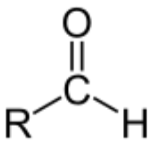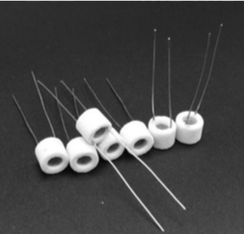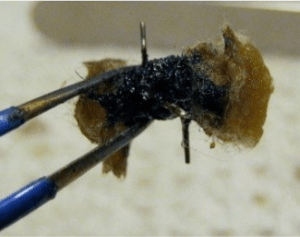Cannabis flower sales have been steadily decreasing in favor of the extract market, which has been thriving for the past couple of years. Widely used vaping cartridges/atomizers are mostly comprised of either cotton wicks or ceramic wicks. This paper will explain the dangerous aspects of using the former.
What is a dry hit and wire oxidation?
A dry hit is the moment when you pull on an atomizer (cartridge) that’s not fully saturated. This lack of saturation causes the heat to warm up the actual wicking material, burning or charring it slightly and producing an extremely unpleasant flavor. During this process, aldehyde emissions are off the charts and their levels become dangerous for the consumer.
Although wicking materials are almost always unflavored, burnt wicking material tastes like the bottom of a used ashtray. Lack of wick saturation is caused by many different factors, but there are a few common problems that plague consumers more than the rest. Each of these problems can become more prevalent depending on the type of device used.
According to coil science another risk to be mindful of is the lack of protective bonded coating on cotton wicks, which results in frequent failures of the wires due to oxidation of the alloy, which is accelerated at elevated temperature. The phenomenon is amplified in presence of aggressive mixtures of oils and during repetitive heating and cooling periods. This results in a layer of oxidized material being formed on the wire’s surface, thus creating a risk of that layer to peeling off and for material particles to be released.
What are aldehydes?

Aldehydes are simple compounds which contain a carbonyl group – a carbon-oxygen double bond. They are simple in the sense that they don’t have other reactive groups like -OH or -Cl attached directly to the carbon atom in the carbonyl group – as you might find, for example, in carboxylic acids, which contain -COOH.
Exposures to formaldehyde, acrolein, and other aldehydes may occur at work, at home, and outdoors but are primarily caused by smoking or vaping. The toxicities associated with some aldehydes are known to cause neurodegenerative disease, heart disease, and some types of cancer. In addition, inhalation of high doses of formaldehyde has produced nasal tumors in laboratory rats, and lower concentrations have irritated eyes and air passages in humans.
What are ceramic coils and their benefits?
The beauty of ceramic coils is that they use an age-old wonder material as their base. Ceramic is extremely hard, with a massively high melting temperature and chemical resistance, which makes it the perfect material for something that gets as hot as coils do in vaporizers.
 Ceramic coils consist of a microporous structure, which allows oil to flow through the hard material. The heating element is cast inside the ceramic material with a sheet of organic cotton sitting between the hard ceramic and the hard metal shell in order to prevent leaking. When you fill a cartridge or tank with cannabis oil, it is soaked up quickly, thus making its way to the wire faster. As a ceramic coil is heated, it works just as any other vape coil transforming oil into vapor – while doing so far more efficiently than cotton.
Ceramic coils consist of a microporous structure, which allows oil to flow through the hard material. The heating element is cast inside the ceramic material with a sheet of organic cotton sitting between the hard ceramic and the hard metal shell in order to prevent leaking. When you fill a cartridge or tank with cannabis oil, it is soaked up quickly, thus making its way to the wire faster. As a ceramic coil is heated, it works just as any other vape coil transforming oil into vapor – while doing so far more efficiently than cotton.
When using a ceramic coil, you’ll find that you can produce the same amount of vapor as usual but with a lower wattage, thus not degrading your extract/oil. Flavor is also bolder when using a ceramic coil, and then there’s the added benefit of avoiding a dry hit which you run into very often with cotton wicks. Ceramic coils also provide no spit-back, and it has a far longer lifespan under high temperatures which can make them particularly appealing to people who vape frequently.
What about potential ceramic particulate release while vaping?
In January 2016, a famous vape reviewer was concerned with potential particulate release in vapor when reviewing branded ceramic coils. He mandated a third party for further analysis of the particles emitted during vaping with a microporous ceramic coil. The protocol used was 25 puffs once every 30 seconds with a 25ml / 3 second puffing profile. The sample was collected on a filter (MCE) before and after the 25 puffs. This is extreme usage in a short period of time. The filter was then examined using a stereomicroscope at magnifications uf to x40.
The analysis report did not confirm the concerns and concluded that no particulate matter could be found after using the ceramic coil.
It is important to stress that with the Cannabis industry quickly growing, and extracts and concentrates becoming a bigger piece of the cake, it becomes the retailer’s responsibility to inform end users about dangers of using cotton wicks. Safety must be prioritized and the way to achieve this is to arm end users with knowledge and educate them about the questions they need to be asking when purchasing a vape cartridge from a dispensary/retailer.
There is enough evidence to prove that cotton wicks are unsafe for cannabis vaping and there is a wide range of vaping devices with ceramic wicks available as an alternative. Cannabis helps patients with a variety of severe medical conditions and it is important to ensure that the device they choose does not harm or pose any danger to their health.















































